How
Margaret Wood's Ancestors came to Normanby
(Research Bernie 2015)
In
November 1868 Normanby P. C. C. listed a legacy of £50
from Ann Surr (1778-1868) of Keldholme
towards the rebuilding of Normanby church. Mrs Surr listed in
Baines' Directory (1823) as living at Keldholme
Priory. The Surr family had connections with
Normanby and Kirby Misperton
church where two tabletop tombs in the churchyard list three deaths in the
1820s. Mrs Ann Surr,
having no close relatives, left farms and land in
Normanby to John Wood of Askew and Appleton le Moors, yeoman.
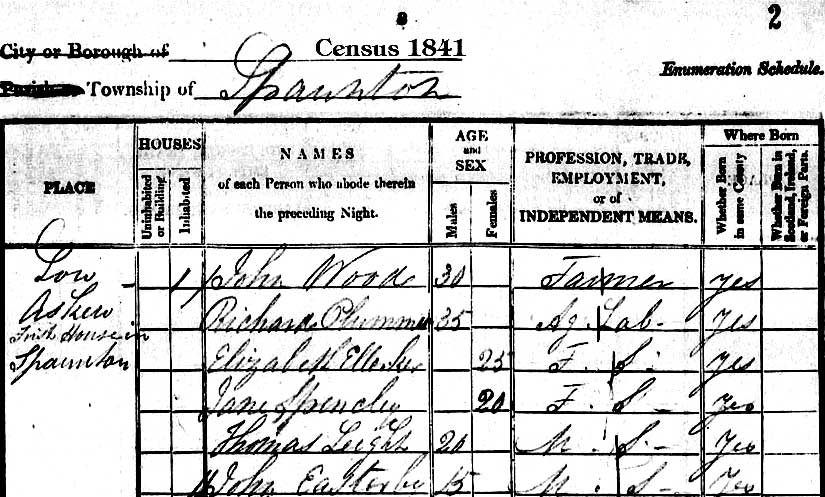
John Wood 1841 Low Askew
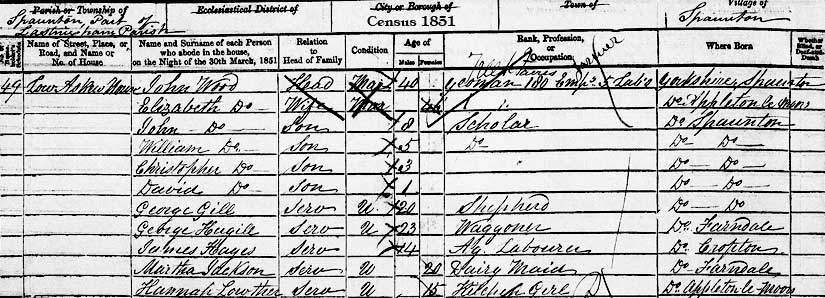
John Wood 1851 Low Askew

John Wood 1861 Low Askew
He moved to live in
Normanby
Township, dying in due course in 1887. Extracts from his will mention
"Mrs Ann Surr deceased." John Wood was the
great-grandfather of Margaret Wood, born in Normanby
and about to celebrate her ninetieth birthday in 2005. We can piece
together a narrative with the assistance of her memories, headstones in
Normanby churchyard and the 1887 will of John Wood
I. (There were to be four John Woods in direct descent).

John Wood 1871 Bridge Farm & Eastfields
Normanby
John Wood I
(his parent being John Wood of Low Askew Born
C.1771 & Ann Nancy Robinson married 1805)
and his wife
Elizabeth farmed from Eastfields Farm ("the
testator's house" in his will). Their son Christopher lived with them
until 1887 when, at the age of thirty-nine, he died just two weeks after his
father. His brother William and sister Margaret had inherited Bridge
Farm (though it is called Sandhill in their
father's will). Bridge and Eastfields farms
owned 130 acres between them in Normanby parish,
most of it lying along both sides of today's Long Lane. In the will this
lane is "the highway leading to Low Bottoms". Low Bottoms fields lay to
the east of Normanby Manor. William Wood
("late of Bridge Farm") died at The Yews in the village in 1924, and Margaret
in 1932. Their brother, John Wood II, never lived in
Normanby, preferring to remain in Appleton where
he had inherited his father's house and garth and
ten acres. However, he sent his son, John Wood III, at the age of twelve
to live at Bridge Farm with his uncle and aunt, William and Margaret.
This was about 1882.
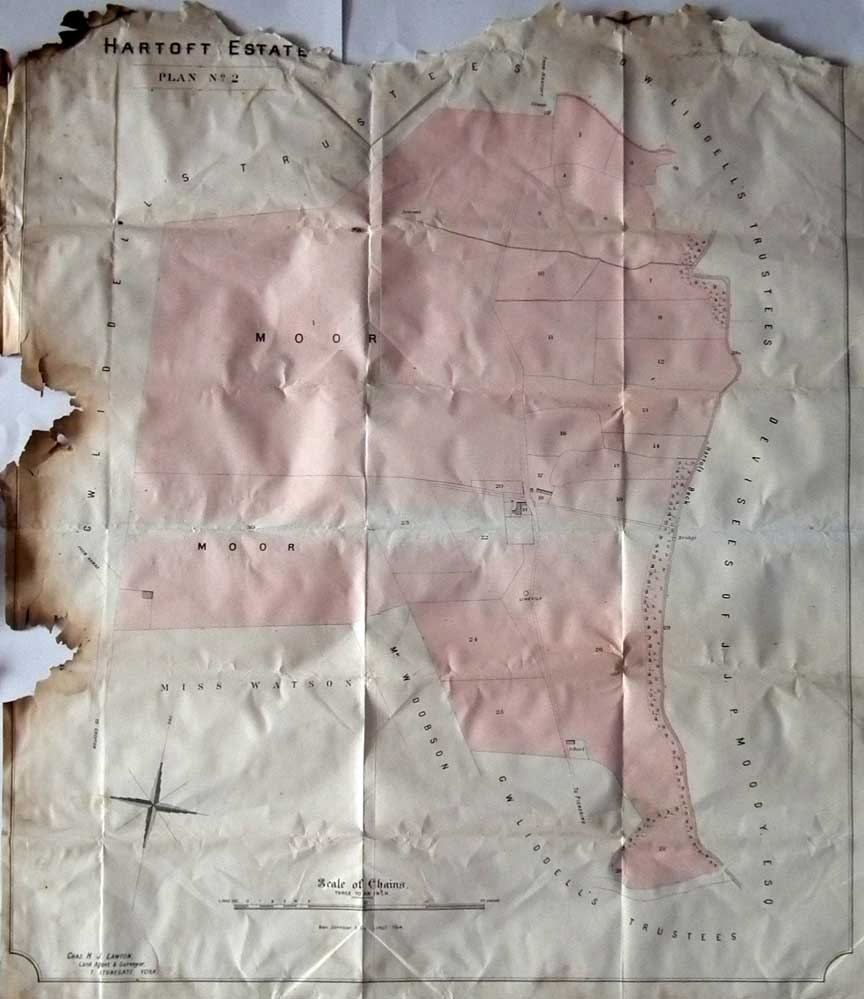
The Wood
family's origins are
within the Lastingham area. The
grandfather
of John Wood 1 was known as John Wood of Beckhouse, Beckhouse being the next
farm to Low Askew in Spaunton. This
John Wood bought Low Askew c.1800 and it past to Robinson Wood and William
Wood’s finally the Wood's sold it in 1900. At the same time John Wood of
Beckhouse (grandfather) apparently also bought three further farms in Cropton.
The four farms
were given to his three sons, John Wood (the father of John Wood 1) got Low
Askew, Joseph Wood got two farms in Cropton Lane and Thomas Wood got Home Farm
in Cropton village this
being sold 1984. It had been let to various
tenants by the Wood family for nearly 100 years.
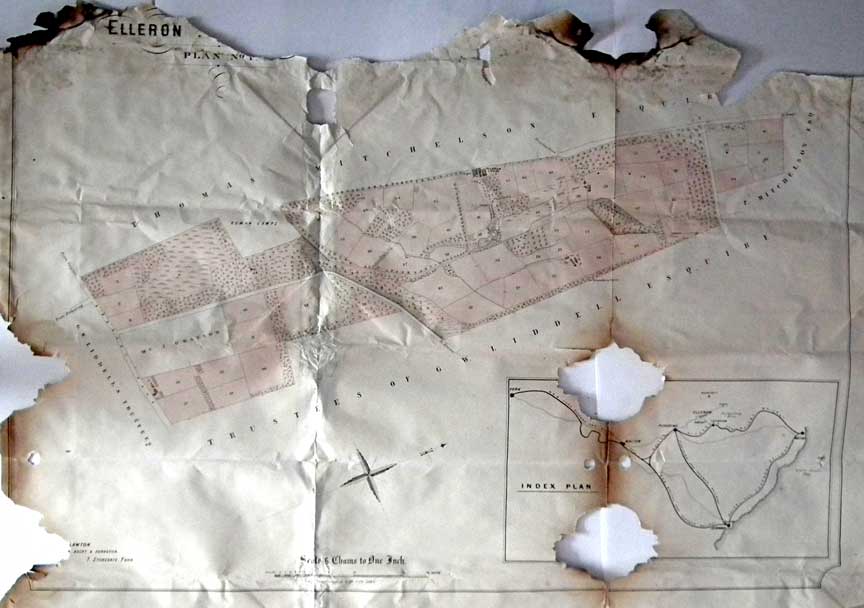
Estate plans of
Elleron and Hartoft from Margaret's collection
(research in
progress)
|

John Wood 1881 Bridge Farm & Eastfields
Normanby


William Wood 1891 Bridge Farm Normanby

William Wood 1901 Bridge Farm Normanby

William Wood 1911 Bridge Farm Normanby
From there the lad was
sent on to live with his grandparents and his uncle Christopher at
Eastfields. His grandmother would not allow
him to attend
Normanby
School because there was a schoolmistress in charge there. He had to
walk from Eastfields to Bridge Farm and then over
the fields to Marton where a schoolmaster
officiated! This schoolboy was to be the father of Margaret living at
Willow House. He eventually settled at Willow House and later
married Louisa Wilder with whom he had two children, John Wood IV (1913-82)
and Margaret (1915-2011).
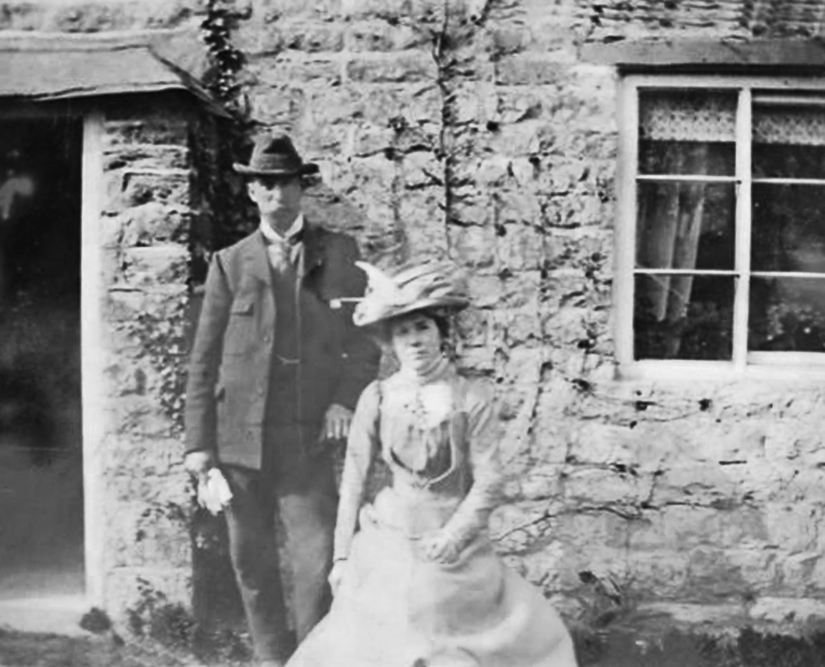
John and Louisa Wood wedding 5th February
1902
|
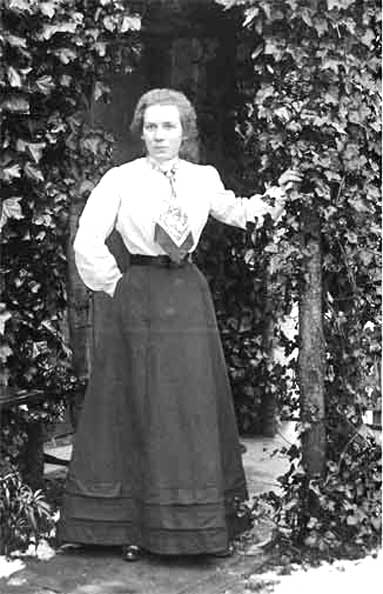
Louisa Wood (nee Wilder)
(1883-1976)
at Willow House.
|
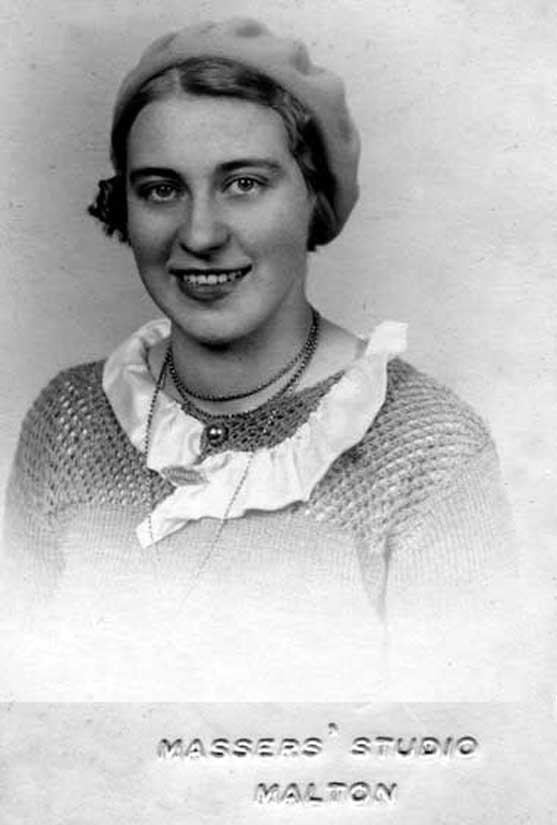
Louisa Margaret Wood
(1915-2011) |

Louisa Wilder Census 1901 domestic servant
Normanby Rectory.

Louisa Wilder now married to John Wood and
living at Willow House
The house had been part
of John Wood 1's estate, his will describing it as
two attached cottages with garden, orchard and a "Pig Garth." There was
also a "Fish Pond Close on the west side of the River Seven." Margaret
recalls this as a field of between three and four acres close to the river
levee. The pond would fill up when floods occurred, and people used to
sail on it in the scalding tub used by villagers after butchering
their pigs.
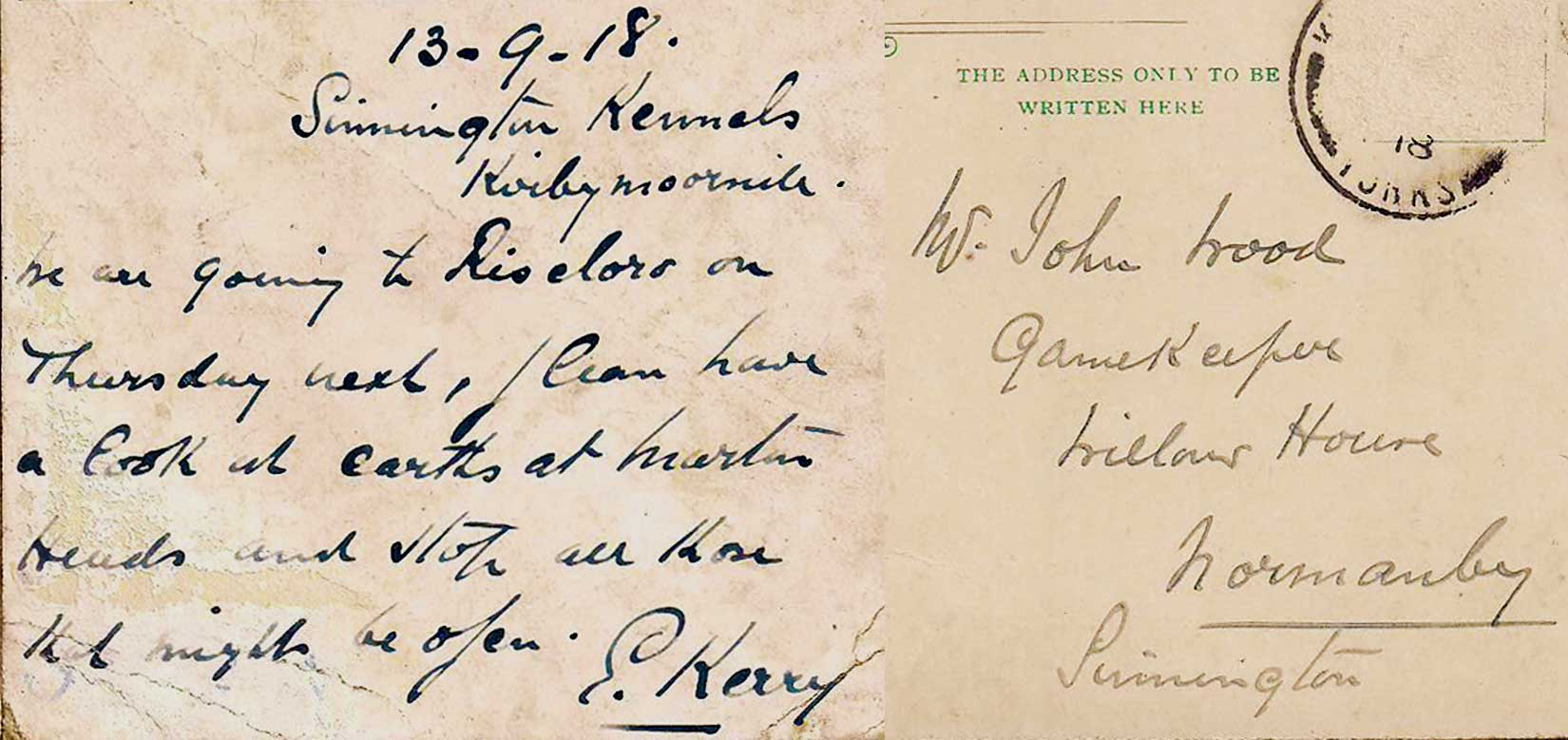
Postcard to John
Wood (Margaret's father)
from Ernest Charles
William Hubert Kerry who was also a fishing tackle dealer, guide and
consultant and lived at "Oak Lea"
Marton after World War I, moving to Lockton
in the 1930's where he died on 25th February 1952 aged 79.
Ernest's correct name was Ernst Karl Willhelm Josef Hubert De
Ketschendorf born Coburg, Germany on the 3rd May 1873, his father
being Freiherr (Baron) de Ketschendorf and his mother Agathe
Rekowski.
Further
research on Ernest Kerry will be added in due course. (Bernie)
|
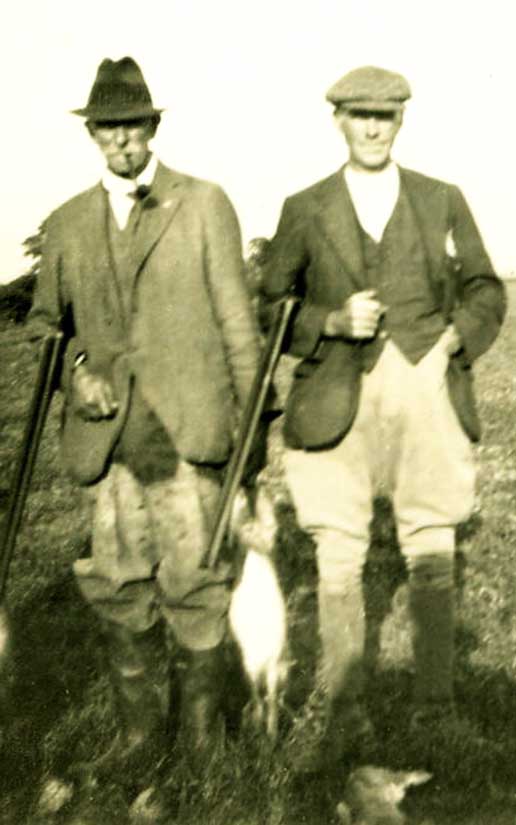
John Wood & Simpson Dodds
c.1910
|
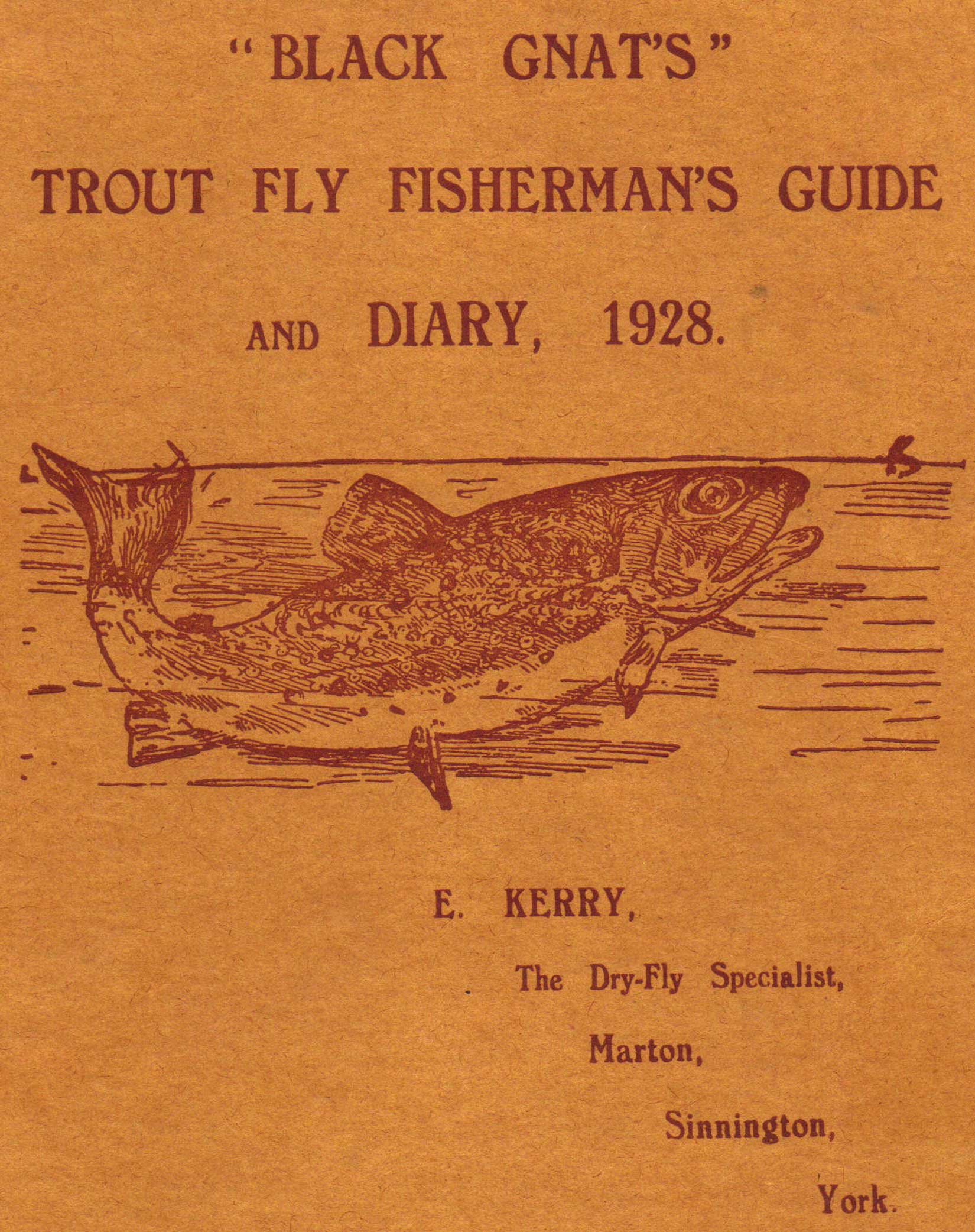 |
Margaret did say that her
father (who died in 1950) had heard when young that the house had earlier been
called Town Acre. She reckons that there was an acre of land around the
buildings, including "a big willow tree with a hollow in it, in which a
cupboard was made to keep a cricket bat or two."
After her brother's death
in 1982 Margaret sold various parts of the orchard and Fish Pond Field to
builders who called the area "The Warren" on account of the rabbits in
residence. Today three properties, Walnut Cottage,
Felbridge and High Gables, stand on the land, with sheep pastured on
the remainder of Fish Pond Field.
Margaret and John Wood c.1919, John b. 1913-d.1982; Margaret b.1915-d.2011
Margaret and her brother John c.1932
Margaret Wood celebrates 70 years of poppy collections, in the garden at High Gables.
Margaret at Buckingham Palace Garden party 9th July 2003
Margaret at Buckingham Palace Garden party 9th July 2003,
Thanks to Elaine & Keith
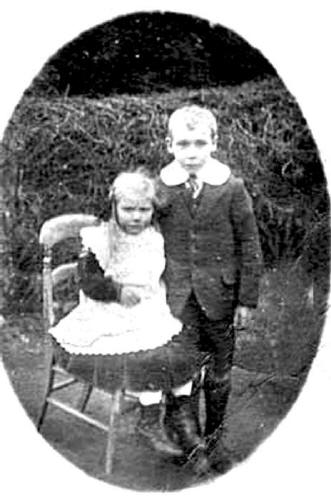
Margaret and John Wood c.1919, John b. 1913-d.1982; Margaret b.1915-d.2011
Top